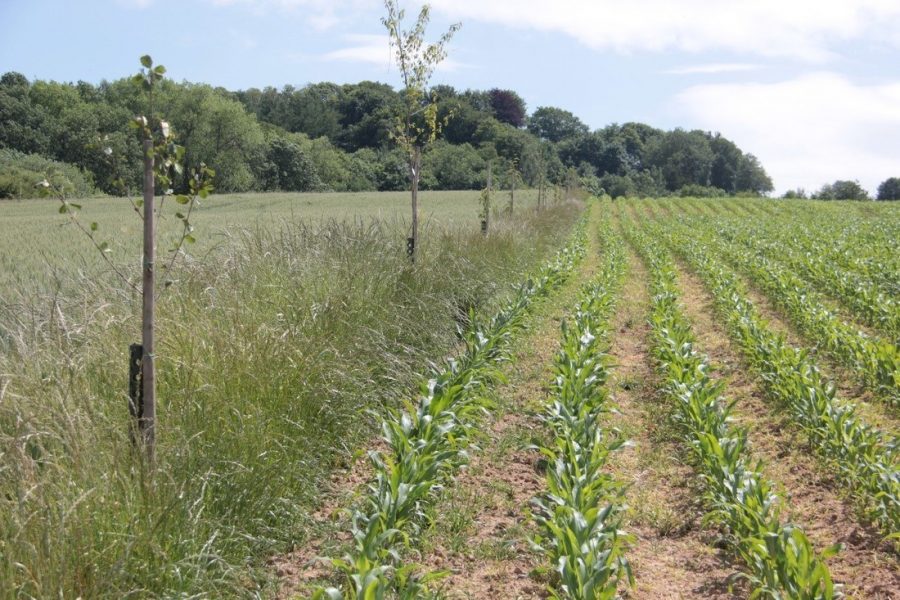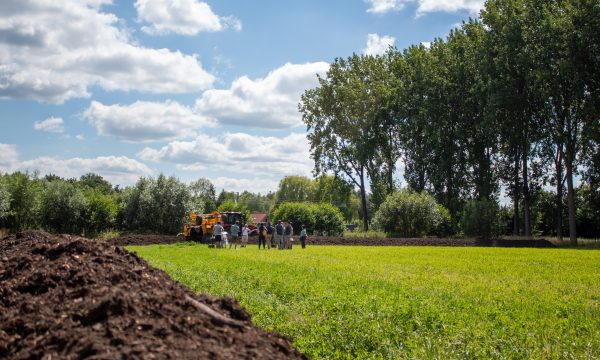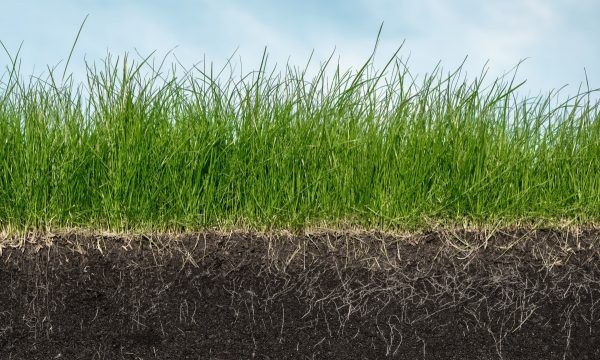Press release Multifunctional use of woody borders, grass strips and extensive grassland management

For the first time, the impact of woody borders, grass strips or nature-oriented grassland management has been studied in a global way. The combined effect on crop yield, biodiversity and several possible ecosystem services has been explained in a broad, quantifiable way in the ILVO-Ghent University-VITO PhD by Laura Van Vooren.
Some effects are surprisingly strong. "From this overview picture, we can aim for win wins between different objectives using more knowledge. From now on we have a better chance of avoiding tradeoffs, such as where there is too much loss of yield for too little gain in biodiversity.”
There is an impetus to pump the many results from the PhD into a calculation tool. This would enable a farmer to quantify the costs and benefits of greening measures and make smarter decisions.
Laura Van Vooren recently defended her doctorate: "Multifunctionality in agriculture: the impact of woody borders, grass strips and extensive grassland management on crops, regulating ecosystem services, and biodiversity". Promotors are Prof. Kris Verheyen from Ghent University, Bert Reubens from ILVO, and Steven Broekx from VITO.
Agro-environmental measures under scrutiny
Agro-environmental measures or nature-oriented measures are applied to counteract the loss of biodiversity occurring as a result of scaling-up and agricultural operations. Usually such measures are at the expense of crop yield. Either a piece of land can no longer be used as a cultivation zone or the intensity of the management decreases. Both farmers and policy actors therefore have to make a balance between income loss (usually compensated by subsidies) and positive effects on both environment and biodiversity. The first aspect is relatively easy to express in figures, but the second is more difficult to quantify.
What is innovative in Laura Van Vooren's study is that she unravels the concept of ecosystem services into measurable indicators. Ecosystem services contribute both directly and indirectly to human well-being. Or in other words: they are the benefits that people obtain from nature and natural processes. Carbon storage in soil, water quality improvement, erosion reduction and natural pest control are examples of indicators for this.
In previous studies, the focus was on only one specific ecosystem service. "By analyzing the broad set of ecosystem services and associated indicators, an objective and reliable measurement of the multiple effects of woody borders, grass strips, and grassland management is now available for the first time."
Carbon, water, erosion management, insects, yield: figures
Figures about the size of an effect are partially dependent on the location and specific situation, and therefore cannot be universally applied. "The exact ratio between yield loss, biodiversity and ecosystem services appears to be strongly influenced by, for example, the location or dimensions of the woody borders or grass strips, or by the kind of management in grassland, e.g., meadow bird management or management in function of plant diversity." But these estimates are certainly a guideline for those who want to make a cost-benefit assessment in the future.
In the studied grass strips, the soil carbon content appears to be 25% higher on average compared to the adjacent arable parcel.
Both grass strips and woody borders contribute significantly to water quality, in particular by capturing nitrogen and phosphorus from surface water. The surface water left by a woody border contains approximately 69% less nitrogen than the incoming water, and up to 67% phosphorus has been captured. In the same way, a grass strip is able to absorb 73% phosphorus and 76% nitrogen from surface water, compared with the levels in the field water.
In the deeper and older groundwater, the water-purifying effect is slightly less pronounced, but certainly significant: 34% reduction of nitrogen under woody borders, 32% under grass strips.
These effects are, of course, most pronounced on hilly parcels where the run-off water is assumed to pass through completely the woody border or grass strip. In reality, that is not always the case.
Erosion can be reduced by an average of 90% by grass strips, according to the measurements of Laura Van Vooren. A similar score is obtained when using woody borders: up to 91% less erosion.
The effects were also significant for insects and spiders. In woody borders, for example, spider activity increases significantly. Spiders are a positive indicator for biodiversity and natural pest management. On grass strips, both the number of species and the number of predatory pests were considerably higher than on the adjacent agricultural parcel.
The crop yield decreases next to a woody border, as expected. Van Vooren measured an average of 21% less crop yield in a first zone up to 5 times the height of the woody border. “But sometimes you can see the yield slightly increasing at a greater distance from the woody border, due to the wind screen effect”.
Yield, raw protein and mineral nitrogen levels in the soil were higher in the regular and intensive land management than in the extensive grassland with meadow bird or botanical management. More plant species were counted when using extensive management.
Towards an optimal balance between benefits and cost efficiency
The figures prove that greening measures are effective. But in practice, there is still room to strive for a balance in the objectives, for an optimal net price. “Cost efficiency has to be considered carefully. To put it simply: farmers’ incomes loss should be fairly compensated to realize important societal benefits”.
Some quick wins to improve cost-efficiency are related to making regulations more flexible. Laura van Vooren: "If you can economically valorize possible end products such as wood chips or grass from grassland management, you can influence the cost-efficiency. In current business operations, you often see few application possibilities for such valorizations. On the other side, increasing and improving the farmers’ flexibility to fit the nature management measures within a local vision can be improved. Finally, the possibilities for allowing farmers to work together can be expanded. Collaborations between farmers and landscape managers would increase efficiency. Allow them, for example, to organize the management tasks together! "
Now, farms can create their own final balance sheet of costs and benefits, thanks to this study. Data about the impact on yield were essential. A truly user-friendly interactive measurement tool is the next possible step. That would offer a multifunctional assessment framework and would contribute to the development of well-thought-out measures within a more agro-ecological agriculture.
An important recommendation based on this PhD: do not focus only on one function. “It’s better to evaluate the impact on a series of several functions before implementing or designing a new measure. That way you can look for win-wins and avoid trade-offs.”
But an equally important message is that an ecosystem services framework is also an important step towards a system approach to transitions and changes in the agricultural system. “Changing one aspect or measure within a complete farm system is often neither effective enough nor economically interesting. Therefore, consider the full system.”


